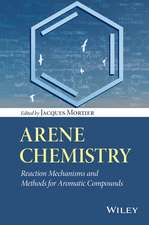Nephrotoxic Mechanisms of Drugs and Environmental Toxins
Autor George A. Porteren Limba Engleză Paperback – 14 noi 2012
Preț: 406.05 lei
Nou
Puncte Express: 609
Preț estimativ în valută:
77.70€ • 81.33$ • 64.67£
77.70€ • 81.33$ • 64.67£
Carte tipărită la comandă
Livrare economică 31 martie-14 aprilie
Preluare comenzi: 021 569.72.76
Specificații
ISBN-13: 9781468442168
ISBN-10: 1468442163
Pagini: 488
Ilustrații: XIX, 466 p. 29 illus.
Dimensiuni: 178 x 254 x 26 mm
Greutate: 0.84 kg
Ediția:Softcover reprint of the original 1st ed. 1982
Editura: Springer Us
Colecția Springer
Locul publicării:New York, NY, United States
ISBN-10: 1468442163
Pagini: 488
Ilustrații: XIX, 466 p. 29 illus.
Dimensiuni: 178 x 254 x 26 mm
Greutate: 0.84 kg
Ediția:Softcover reprint of the original 1st ed. 1982
Editura: Springer Us
Colecția Springer
Locul publicării:New York, NY, United States
Public țintă
ResearchCuprins
Section I. Pathophysiology of Acute Renal Failure.- 1. Overview of Pathophysiology of Acute Renal Failure.- 2. Pathology of Acute Renal Failure.- 3. Effect of Heavy Metals on Sodium Transport in Vitro.- 4. Renal Hemodynamics in Nephrotoxic Acute Renal Failure.- 5. The Glomerulus in Acute Renal Failure.- 6. Heavy Metal Models of Experimental Acute Renal Failure.- 7. Studies on Segmental Transport in Models of Acute Renal Failure.- 8. Enhancement of Renal Regeneration by Amino Acid Administration.- 9. Amphotericin B Toxicity for Epithelial Cells.- Section II. Renal Failure Due to Antimicrobial Agents.- 10. Antibiotic Nephrotoxicity: An Overview.- 11. Functional Considerations in Aminoglycoside Nephrotoxicity.- 12. Aminoglycoside Nephrotoxicity: Lysosomal and Mitochondrial Alterations in Rat Kidneys after Aminoglycoside Treatment.- 13. Aminoglycoside Interactions with Other Drugs: Clinical and Toxicologic Implications.- 14. Nephrotoxicity of Cephalosporin Antibiotics: Mechanisms and Modifying Factors.- 15. Tetracycline Nephrotoxicity.- Section III. Tubulointerstitial Nephropathy Due to Drugs and Environmental Toxicants.- 16. Tubulointerstitial Nephropathy: An Overview.- 17. Current Concepts of Tubulointerstitial Nephritis.- 18. Analgesic Nephropathy: Clinical and Epidemiologic Factors.- 19. Analgesic Nephropathy: Renal Drug Distribution and Metabolism.- 20. Endemic Balkan Nephropathy.- 21. Nephrotoxicity of Natural Products: Mycotoxin-Induced Nephropathy.- 22. Lead Nephrotoxicity.- 23. The Rat as an Animal Model of Lead Nephropathy.- Section IV. Pathophysiologic Mechanisms of Toxicity Induced by Environmental Toxins Jerry.- 24. Environmental Toxicities and Hazards: Introduction.- 25. Metabolism of Cadmium.- 26. Cadmium Nephropathy.- 27. Ultrastructural and Biochemical Localization of Organelle Damage from Nephrotoxic Agents.- 28. Mechanisms of Acute Nephrotoxicity: Halogenated Aliphatic Hydrocarbons.- 29. Potentiation of the Action of Nephrotoxic Agents by Environmental Contaminants.- 30. Alteration of Chloroform-Induced Nephrotoxicity by Exogenous Ketones.- Section V. Immunologic Mechanisms and Toxic Nephropathies.- 31. Drug-Induced Renal Lesions: Immunopathologic Mechanisms.- 32. Antihistone Antibodies Induced by Procainamide and Hydralazine.- 33. Drug- and Toxin-Induced Nephritides: Anti-Kidney Antibody and Immune Complex Mediation.- 34. Immunological Mechanisms in Drug-Induced Acute Interstitial Nephritis.- 35. Drug-Induced Nephritides: Immediate Hypersensitivity Mechanism.- 36. Gold-Induced Autoimmune Reactions.- 37. Mercuric Chloride-Induced Immunologically Mediated Diseases in Experimental Animals.- 38. Genetic Control of Mercury-Induced Immune Response in the Rat.- 39. The Application of a Radioimmunoassay for Sensitive Detection of Metallothionein (Thionein) in Physiologic Fluid of Humans and Rats.








